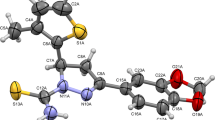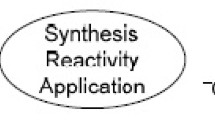Abstract
The saturated nitrogen-containing heterocyclic compounds include many drugs and compounds that may be used as synthons for the synthesis of other pharmacologically active substances. The need for new derivatives of saturated nitrogen-containing heterocycles for organic synthesis, biotechnology and the pharmaceutical industry, including optically active derivatives, has increased interest in microbial synthesis. This review provides an overview of microbial technologies that can be valuable to produce new derivatives of saturated nitrogen-containing heterocycles, including hydroxylated derivatives. The chemo-, regio- and enantioselectivity of microbial processes can be indispensable for the synthesis of new compounds. Microbial processes carried out with fungi, including Beauveria bassiana, Cunninghamella verticillata, Penicillium simplicissimum, Aspergillus niger and Saccharomyces cerevisiae, and bacteria, including Pseudomonas sp., Sphingomonas sp. and Rhodococcus erythropolis, biotransform many substrates efficiently. Among the biological activities of saturated nitrogen-containing heterocyclic compounds are antimicrobial, antitumor, antihypertensive and anti-HIV activities; some derivatives are effective for the treatment and prevention of malaria and trypanosomiasis, and others are potent glycosidase inhibitors.
Similar content being viewed by others
References
Ahn KH, Shin Y-S (1997) Synthesis of 1,4-dideoxy-1,4-imino-D-arabinitol (D-AB-1) through a divergent approach. Bull Korean Chem Soc 18(11):1192–1195
Archelas A, Furstoss R, Srairi D, Maurey G (1986) Transformations microbiologiques, 5. Hydroxylation microbiologique de lactames, d'amides et d'imides monocycliques par le champignon Beauveria sulfurescens. Bull Soc Chim Fr 2:234–238
Archelas A, Furneron ID, Furstoss R (1988) Microbial transformations 11. Regioselective hydroxylation of β-lactams by the fungus Beauveria sulfurescens. Tetrahedron Lett 29(50):6611–6613. doi:10.1016/S0040-4039(00)82410-7
Aurrecoechea JM, Bustos F, López B, Saornil C, Suero R (2009) A new entry into 3-hydroxypyrrolidine derivatives from protected α- or β-amino esters. Arkivoc 11:94–104
Baker P (1987) Biotransformations. Lab Pract 36(7):46–47
Barreiros L, Fernandes A, Ferreira ACS, Pereira H, Bastos MMSM, Manaia CM, Nunes OC (2008) New insights into a bacterial metabolic and detoxifying association responsible for the mineralization of the thiocarbamate herbicide molinate. Microbiology 154:1038–1046. doi:10.1099/mic.0.2007/015297-0
Bertrand L, Kremsner PG (2002) Clindamycin as an antimalarial drug: review of clinical trials. Antimicrob Agents Chemother 46(8):2315–2320. doi:10.1128/AAC.46.8.2315-2320.2002
Bot C, Hall BS, Bashir N, Taylor MC, Helsby NA, Wilkinson SR (2010) Trypanocidal activity of aziridinyl nitrobenzamide prodrugs. Antimicrob Agents Chemother 54(10):4246–4252. doi:10.1128/AAC.00800-10
Chang D, Feiten H-J, Engesser KH, Van Beilen JB, Witholt B, Li Z (2002) Practical syntheses of N-substituted 3-hydroxyazetidines and 4-hydroxypiperidines by hydroxylation with Sphingomonas sp. HXN-200. Org Lett 4(11):1859–1862. doi:10.1021/ol025829s
Chawla R, Singh AK, Yadav LDS (2013) Organocatalysis in synthesis and reactions of epoxides and aziridines. RSC Advances 3(29):11385–11403. doi:10.1039/C3RA00175J
Chen P, Gao M, Wang DX, Zhao L, Wang MX (2012) Enantioselective biotransformations of racemic and meso pyrrolidine-2,5-dicarboxamides and their application in organic synthesis. J Org Chem 77:4063–4072. doi:10.1021/jo300412j
Dexian W, Meixiang W (2010) Biotransformations of three-membered (hetero) cyclic nitriles and their applications in organic synthesis. Progress in Chemistry 22(7):1397–1402
D'hooghe M, Kenis S, Vervisch K, Lategan C, Smith PJ, Chibale K, De Kimpe N (2011) Synthesis of 2-(aminomethyl)aziridines and their microwave-assisted ring opening to 1,2,3-triaminopropanes as novel antimalarial pharmacophores. Eur J Med Chem 46(2):579–587. doi:10.1016/j.ejmech.2010.11.037
Diethelm S, Carreira EM (2013) Total synthesis of (±)-gelsemoxonine. J Am Chem Soc 135(23):8500–8503. doi:10.1021/ja208617c
Duran N, De Conti R, Rodrigues JAR (2000) Biotransformations by microorganisms, organisms and enzymes: state of art. Bol Soc Chil Quim 45(1):109–121
Faber K (2004) Biotransformations in organic chemistry. Springer, Heidelberg
Fattorusso E, Taglialatela-Scafati O (2009) Marine antimalarials. Mar Drugs 7:130–152. doi:10.3390/md7020130
Feula A, Male L, Fossey JS (2010) Diastereoselective preparation of azetidines and pyrrolidines. Org Lett 12(21):5044–5047. doi:10.1021/ol102215e
Fürmeier S, Metzger JO (2003) Fat-derived aziridines and their N-substituted derivatives: biologically active compounds based on renewable raw materials. Eur J Org Chem 4:649–659. doi:10.1002/ejoc.200390105
Georg GI, Guan X (1992) Asymmetric synthesis of α-alkylated α-amino acids: azocane-2-carboxylic acids. Tetrahedron Lett 33:17–20. doi:10.1016/S0040-4039(00)77662-3
Ghorai MK, Das K, Kumar A (2007) A convenient synthetic route to enantiopure N-tosylazetidines from α-amino acids. Tetrahedron Lett 48:2471–2475. doi:10.1016/j.tetlet.2007.02.033
Grishina GV, Veselov IS, Nelyubina YV, Surovaya AN, Zefirov NS (2011) Optically pure trans-1-benzyl-4-aminopiperidin-3-ols. Synthesis and absolute configuration. Arkivoc 10:107–117. doi:10.3998/ark.5550190.0012.a09
Gross C, Felsheim R, Wackett LP (2008) Genes and enzymes of azetidine-2-carboxylate metabolism detoxification and assimilation of an antibiotic. J Bacteriol 190(14):4859–4864. doi:10.1128/JB.02022-07
Hassner A (2009) Adventures in stereochemistry and cycloadditions. Bull Israel Chem Soc 24:20–25
Hocart SJ, Liu H, Deng H, De D, Krogstad FM, Krogstad DJ (2011) 4-Aminoquinolines active against chloroquine-resistant Plasmodium falciparum: basis of antiparasite activity and quantitative structure–activity relationship analyses. Antimicrob Agents Chemother 55(5):2233–2244. doi:10.1128/AAC.00675-10
Hodgson DM, Fleming MJ, Xu Z, Lin C, Stanway SJ (2006) 3-Hydroxypyrrolidines from epoxysulfonamides and dimethylsulfoxonium methylide. Chem Commun 30:3226–3228. doi:10.1039/B606583J
Hüttel W, Hoffmeister D (2010) Fungal biotransformations in pharmaceutical sciences. The Mycota 10(3):293–317. doi:10.1007/978-3-642-11458-8_14
Johnson RA, Herr ME, Murray HC, Fonken GS (1968a) The microbiological oxygenation of azacycloalkanes. Structural determinations leading to transannular reactions. J Org Chem 33(8):3187–3195. doi:10.1021/jo01272a035
Johnson RA, Herr ME, Murray HC, Reineke LM, Fonken GS (1968b) The microbiological oxygenation of some azabicycloalkanes. J Org Chem 33(8):3195–3201. doi:10.1021/jo01272a036
Johnson RA, Murray HC, Reineke LM, Fonken GS (1969) Stereochemistry of microbiological hydroxylation. II. Oxygenation of 1-benzoylalkylpiperidines. J Org Chem 34(8):2279–2284. doi:10.1021/jo01260a009
Johnson RA, Herr ME, Murray HC, Chidester CG, Han F (1992) Selective oxygenation of adamantanes and other substrates by Beauveria sulfurescens. J Org Chem 57(26):7209–7212. doi:10.1021/jo00052a039
Keifer PA, Nagel DL, Cromwell NH (1988) Stereochemistry and bonding in N-substituted-2-phenyl-3-cyanoaziridines. J Heterocycl Chem 25(2):353–359. doi:10.1002/jhet.5570250201
Leng DH, DeX W, Pan J, Huang ZT, Wang MX (2009) Highly efficient and enantioselective biotransformations of racemic azetidine-2-carbonitriles and their synthetic applications. J Org Chem 74:6077–6082. doi:10.1021/jo9011656
Li Z, Feiten HJ, Chang D, Duetz WA, Van Beilen JB, Witholt B (2001) Preparation of (R)- and (S)-N-protected 3-hydroxypyrrolidines by hydroxylation with Sphingomonas sp. HXN-200, a highly active, regio- and stereoselective, and easy to handle biocatalyst. J Org Chem 66(25):8424–8430. doi:10.1021/jo015826d
McKay VA, Thompson SJ, Tran PM, Goodall KJ, Brimble MA, Barker D (2010) Stereoselective synthesis of 4-substituted 4-hydroxypiperidines via epoxidation–ring opening of 4-methylenepiperidines. Synlett 17:2631–2635. doi:10.1055/s-0030-1258778
Mendoza A, Perez-Silanes S, Quiliano M, Pabón A, Galiano S, Gonzalez G, Garavito G, Zimic M, Vaisberg A, Aldana I, Monge A, Deharo E (2011) Aryl piperazine and pyrrolidine as antimalarial agents. Synthesis and investigation of structure–activity relationships. Exp Parasitol 128(2):97–103. doi:10.1016/j.exppara.2011.02.025
Mihovilovic MD, Spina M, Stanetty P (2005) Synthesis and yeast - mediated bioreduction of α-keto-β-lactams bearing a functionalized and rigid side chain. Arkivoc 5:33–44. doi:10.3998/ark.5550190.0006.504
Modyanova LV, Duduchava MR, Piskunkova NF, Grishina GV, Terentyev PB, Parshikov IA (1999) Microbial transformations of piperidine and pyridine derivatives. Chem Heterocycl Compd 33(5):580–586. doi:10.1007/BF02324642
Osorio-Lozada A, Tovar-Miranda R, Olivo HF (2008) Biotransformation of N-piperidinylacetophenone with Beauveria bassiana ATCC-7159. J Mol Catal B Enzym 55(1–2):30–36. doi:10.1016/j.molcatb.2007.12.026
Pacorel B, Leung SC, Stachulski AV, Davies J, Vivas L, Lander H, Ward SA, Kaiser M, Brun R, O'Neill PM (2010) Modular synthesis and in vitro and in vivo antimalarial assessment of C-10 pyrrole Mannich base derivatives of artemisinin. J Med Chem 53:633–640. doi:10.1021/jm901216v
Parshikov IA, Sutherland JB (2012) Microbial transformations of antimicrobial quinolones and related drugs. J Ind Microbiol Biotechnol 39(12):1731–1740. doi:10.1007/s10295-012-1194-x
Parshikov IA, Modyanova LV, Dovgilevich EV, Terentyev PB, Vorobyeva LI, Grishina GV (1992) Microbiological transformation of nitrogen-containing heterocyclic compounds. 3. Microbiological synthesis of hydroxy derivatives of 1-benzoylpiperidine and 1-benzoylpyrrolidine. Chem Heterocycl Compnds 28(2):159–162. doi:10.1007/BF00473936
Parshikov IA, Netrusov AI, Sutherland JB (2012a) Microbial transformation of azaarenes and potential uses in pharmaceutical synthesis. Appl Microbiol Biotechnol 95(4):871–879. doi:10.1007/s00253-012-4220-z
Parshikov IA, Netrusov AI, Sutherland JB (2012b) Microbial transformation of antimalarial terpenoids. Biotechnol Adv 30(6):1516–1523. doi:10.1016/j.biotechadv.2012.03.010
Petersen M, Kiener A (1999) Biocatalysis: preparation and functionalization of N-heterocycles. Green Chem 1:99–106. doi:10.1039/A809538H
Radic Z, Sit RK, Kovarik Z, Berend Z, Garcia E, Zhang L, Amitai G, Green C, Radic B, Fokin VV, Sharpless KB, Taylor P (2012) Refinement of structural leads for centrally acting oxime reactivators of phosphylated cholinesterases. J Biol Chem 287(15):11798–11809. doi:10.1074/jbc.M111.333732
Richardson DW, Wyso EM (1960) Human pharmacology of guanethidine. Ann N Y Acad Sci 88:944–955. doi:10.1111/j.1749-6632.1960.tb20086.x
Rios R, Ibrahem I, Vesely J, Sundén H, Córdova A (2007) Organocatalytic asymmetric 5-hydroxypyrrolidine synthesis: a highly enantioselective route to 3-substituted proline derivatives. Tetrahedron Lett 48:8695–8699. doi:10.1016/j.tetlet.2007.10.028
Romanova NN, Tallo TG, Bundel YG (1995) Synthesis and stereochemistry of chiral azetidin-2-ones and azetidine-2-thiones. 3. Stereodirected construction of the β-lactam fragment of the thienamycin molecule. Chem Heterocycl Compd 31(2):223–226. doi:10.1007/BF01169684
Seebacher W, Weis R (2011) Novel antimalarial 3-azabicyclo[3.2.2]nonane derivatives. European Patent N 2301627A1, 30 Mar 2011.
Sharma R, Samadhiya P, Srivastava SD, Srivastava SK (2011) Synthesis and biological activity of 2-oxo-azetidine derivatives of phenothiazine. Org Commun 4(2):42–51
Shih TL, Yang RY, Li ST, Chiang CF, Lin CH (2007) Expeditious synthesis of tri- and tetrahydroxyazepanes from D-(-)-quinic acid as potent glycosidase inhibitors. J Org Chem 72:4258–4261. doi:10.1021/jo070058x
Shih TL, Liang MT, Wu KD, Lin CH (2011) Synthesis of polyhydroxy 7- and N-alkyl-azepanes as potent glycosidase inhibitors. Carbohydr Res 346(2):183–190. doi:10.1016/j.carres.2010.11.014
Singh P, Sachdeva S, Raj R, Kumar V, Mahajan MP, Nasser S, Vivas L, Gut J, Rosenthal PJ, Feng TS, Chibale K (2011) Antiplasmodial and cytotoxicity evaluation of 3-functionalized 2-azetidinone derivatives. Bioorg Med Chem Lett 21(15):4561–4563. doi:10.1016/j.bmcl.2011.05.119
Singh P, Singh P, Kumar M, Gut J, Rosenthal PJ, Kumar K, Kumar V, Mahajan MP, Bisetty K (2012) Synthesis, docking and in vitro antimalarial evaluation of bifunctional hybrids derived from β-lactams and 7-chloroquinoline using click chemistry. Bioorg Med Chem Lett 22(1):57–61. doi:10.1016/j.bmcl.2011.11.082
Srairi D, Maurey G (1987) Hydroxylations microbiologiques de pyrrolidinones-2. Bull Soc Chim Fr 2:297–301
Sukul P, Spiteller M (2007) Fluoroquinolone antibiotics in the environment. Rev Environ Contam Toxicol 191:131–162. doi:10.1007/978-0-387-69163-3_5
Sun H, Millar KM, Yang J, Abboud K, Horenstein BA (2000) A new asymmetric route to substituted piperidines: synthesis of N-alkyl-3,4-dihydroxy-5-alkylpiperidines. Tetrahedron Lett 41(16):2801–2804. doi:10.1016/S0040-4039(00)00267-7
Taniguchi T, Ogasawara K (2000) A diastereocontrolled synthesis of (+)-febrifugine: a potent antimalarial piperidine alkaloid. Org Lett 2(20):3193–3195. doi:10.1021/ol006384f
Terent'ev PB, Parshikov IA, Grishina GV, Piskunkova NF, Chumakov TI, Bulakhov GA (1997) Hydroxylation of the double bond in 1-benzyl-3-methyl-Δ3-piperidine by mycelium fungi. Chem Heterocycl Compd 33(5):619–620. doi:10.1007/BF02291950
Terent'ev PB, Zilberstein TM, Borisenko AA, Shmorgunov VA, Piskunkova NF, Grishina GV (2003) Transformation of 1,2,5,6-tetrahydropyridines with mycellar fungi. Chem Heterocycl Compd 39(7):885–894. doi:10.1023/A:1026142220384
Thibodeaux CJ, Chang WC, Liu HW (2012) Enzymatic chemistry of cyclopropane, epoxide, and aziridine biosynthesis. Chem Rev 112(3):1681–1709. doi:10.1021/cr200073d
Vickers S, Polsky SL (2000) The biotransformation of nitrogen containing xenobiotics to lactams. Curr Drug Metab 1(4):357–389. doi:10.2174/1389200003338929
Walsh JJ, Coughlan D, Heneghan N, Gaynora C, Bell A (2007) A novel artemisinin–quinine hybrid with potent antimalarial activity. Bioorg Med Chem Lett 17:3599–3602. doi:10.1016/j.bmcl.2007.04.054
Weintraub PM, Sabol JS, Kane JM, Borcherding DR (2003) Recent advances in the synthesis of piperidones and piperidines. Tetrahedron 59(17):2953–2989. doi:10.1016/S0040-4020(03)00295-3
Wright AD, Goclik E, König GM, Kaminsky R (2002) Lepadins D-F: antiplasmodial and antitrypanosomal decahydroquinoline derivatives from the tropical marine tunicate Didemnum sp. J Med Chem 45(14):3067–3072. doi:10.1021/jm0110892
Acknowledgments
We thank Dr. Vitaly Lashin (ACD/Labs, Moscow) for the consultations in organic chemistry and Dr. John B. Sutherland (U.S. Food and Drug Administration) for the great help with English.
Author information
Authors and Affiliations
Corresponding author
Rights and permissions
About this article
Cite this article
Parshikov, I.A., Silva, E.O. & Furtado, N.A.J.C. Transformation of saturated nitrogen-containing heterocyclic compounds by microorganisms. Appl Microbiol Biotechnol 98, 1497–1506 (2014). https://doi.org/10.1007/s00253-013-5429-1
Received:
Revised:
Accepted:
Published:
Issue Date:
DOI: https://doi.org/10.1007/s00253-013-5429-1




